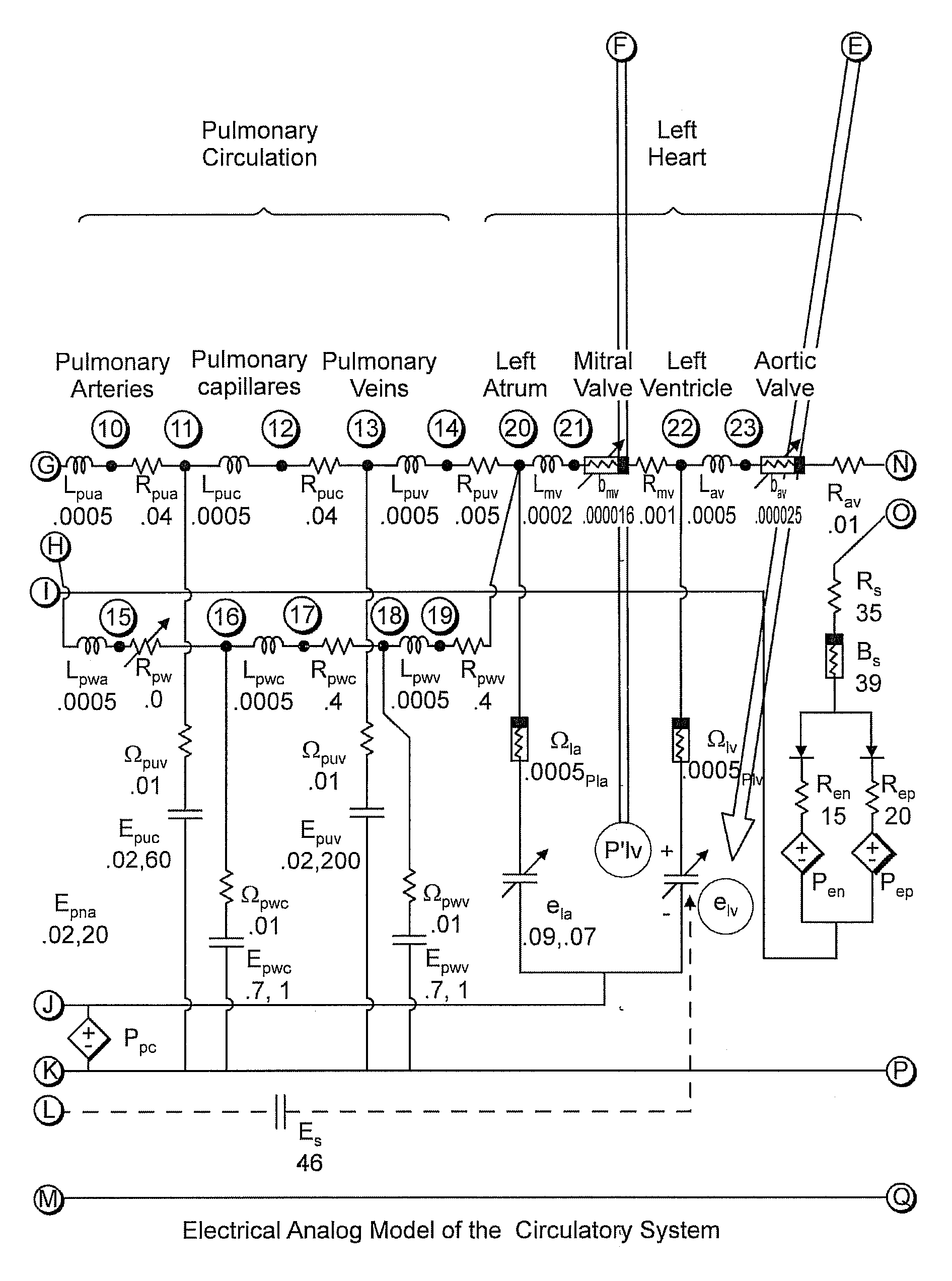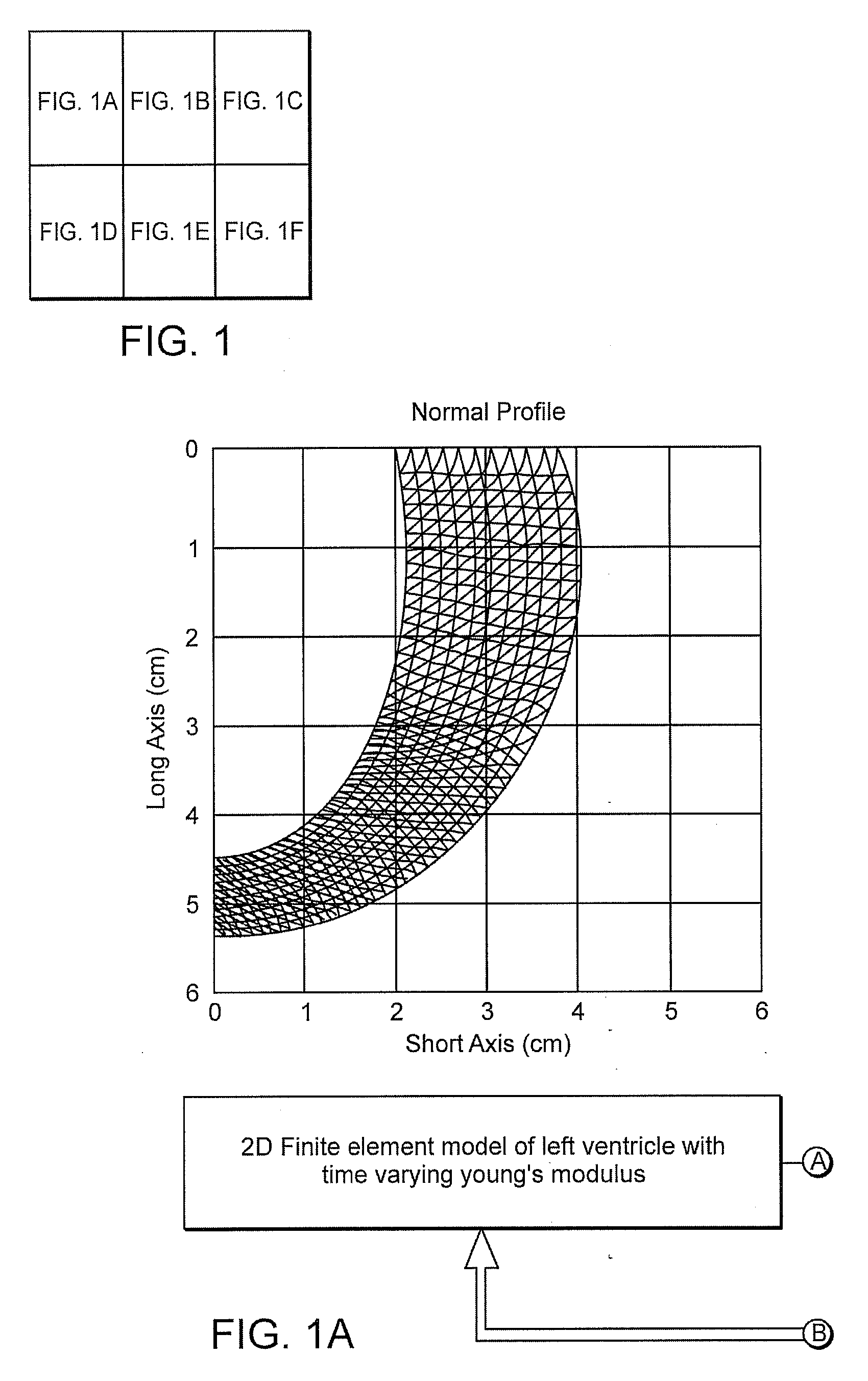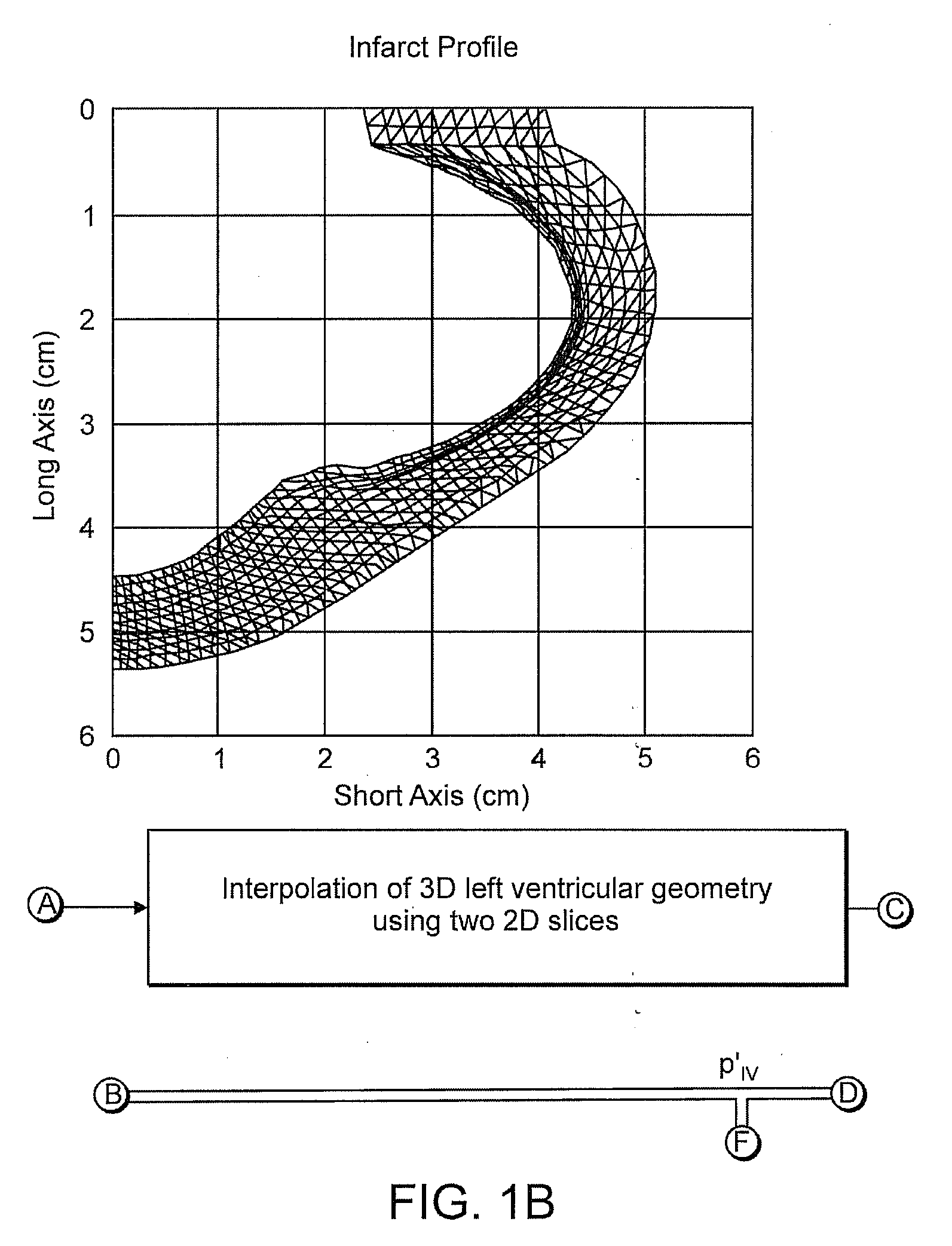Integrated finite element and circulatory model for predicting hemodynamic effects of left ventricular impairment, resynchronization and remodeling
a technology of left ventricular myocardium and integrated finite element, applied in the field of computational models, can solve the problems of not having a three-dimensional description of the left ventricular wall, inability to relate the regional impairment of the left ventricular myocardium to the global effect of the entire cardiovascular system on the hemodynamics of the cardiovascular system, and inability to model the left ventricular wall
- Summary
- Abstract
- Description
- Claims
- Application Information
AI Technical Summary
Benefits of technology
Problems solved by technology
Method used
Image
Examples
Embodiment Construction
[0017] This invention integrates a complex circulatory model and a finite element dynamically and efficiently. It is presently the only available computational model that can relate LV regional myocardial contraction to the hemodynamic consequences for both transient and steady states of the cardiovascular dynamics. The 3-dimensional mesh generated by two 2-dimensional finite element calculations significantly decreases the computation time. Traditional 3D finite element LV models usually take days to compute and require supercomputers or clustered processors. With the algorithm, it is possible to run many cardiac cycles continuously to reveal the transient phase within a relative short time. The circulatory model is also much more comprehensive than the 3-element Windkessel model used in this type of models in the past. It includes the functions of four cardiac chambers, cardiac valves, pulmonary circulation, systemic arterial bed, and venous return. The model is physiological by g...
PUM
 Login to View More
Login to View More Abstract
Description
Claims
Application Information
 Login to View More
Login to View More - R&D
- Intellectual Property
- Life Sciences
- Materials
- Tech Scout
- Unparalleled Data Quality
- Higher Quality Content
- 60% Fewer Hallucinations
Browse by: Latest US Patents, China's latest patents, Technical Efficacy Thesaurus, Application Domain, Technology Topic, Popular Technical Reports.
© 2025 PatSnap. All rights reserved.Legal|Privacy policy|Modern Slavery Act Transparency Statement|Sitemap|About US| Contact US: help@patsnap.com



